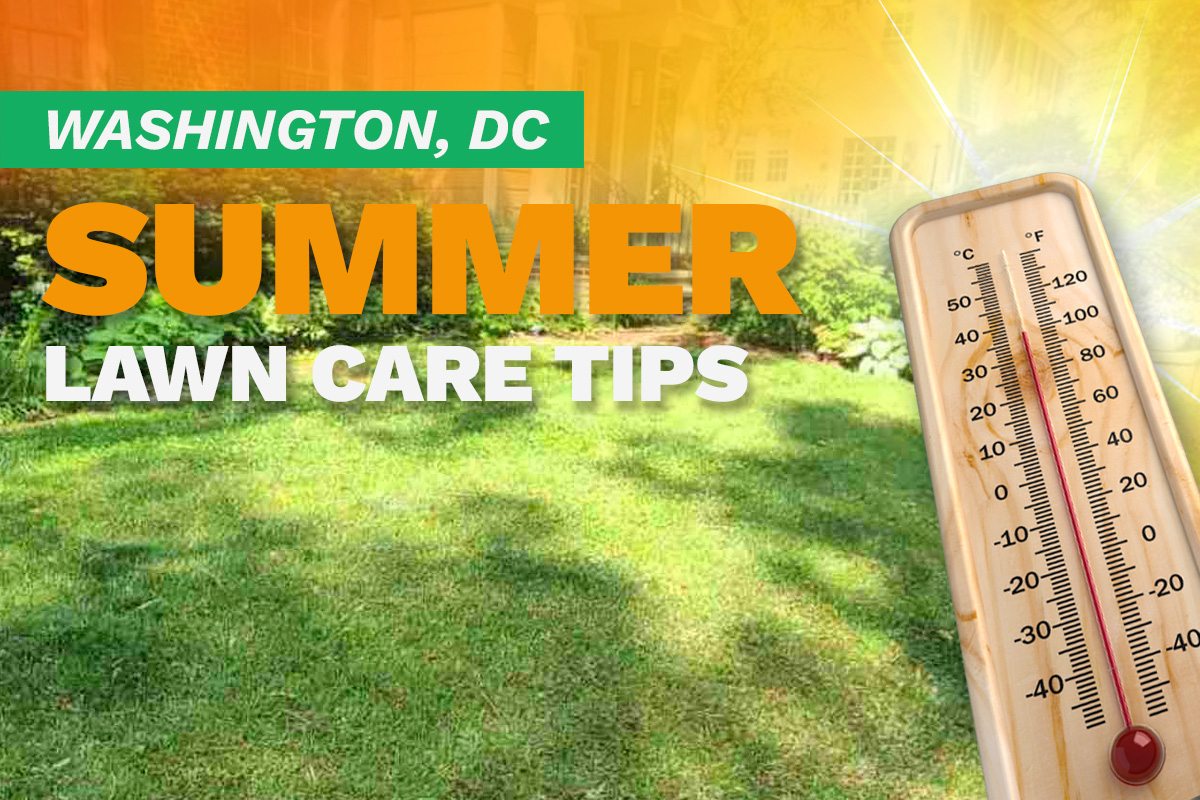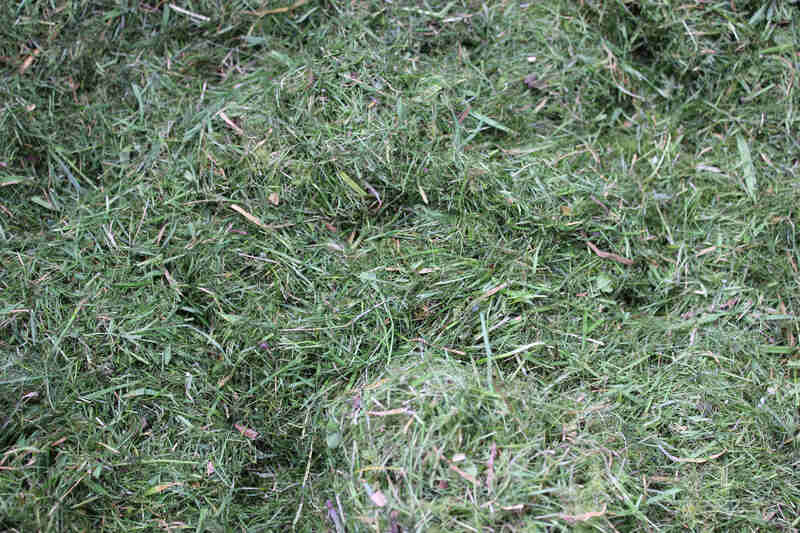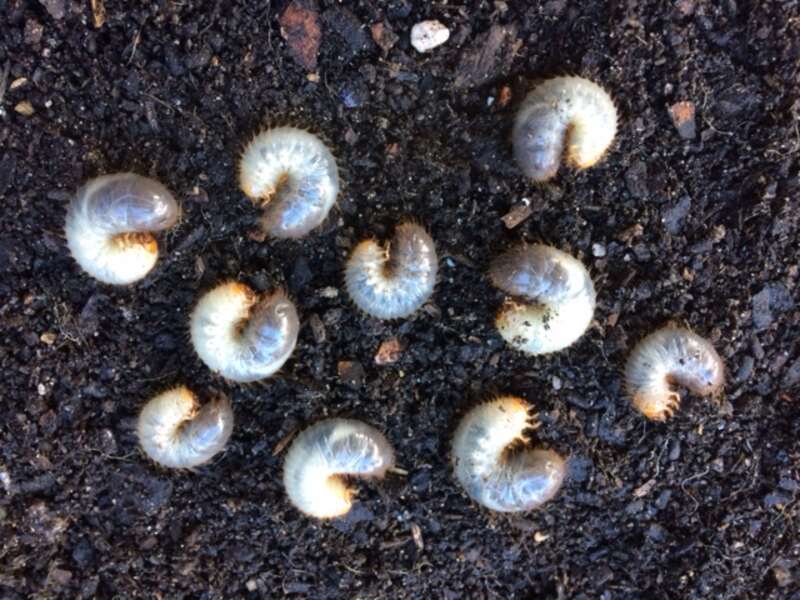
There’s nothing like a DC summer – boats and paddleboards are out along the Georgetown Waterfront, the streets are alive with Go-go music, and the traffic dies down as folks head out on vacation. In the summer, your lawn might also take a vacation, since the cool-season grass types best suited to the DMV tend to go dormant in the heat.
Summer might be a quiet season for your grass, but that doesn’t mean there’s nothing to do. DC’s hot and muggy summers can be tough on your lawn, and some TLC will make a big difference. This summer lawn care checklist will help you make sure your DC lawn can handle the heat and start off the fall on the right foot.
Raise Your Mower Height

To make sure your lawn can handle the stress of a hot summer, it’s important to raise your mowing height to keep your grass strong. As University of Maryland turf expert Geoff Rinehart explains, “The taller you mow it, the more it will keep weeds out, but also the roots will go down deep as well.”
This is especially important during periods of dry weather. Don’t mow grass that isn’t growing, and keep your grass no shorter than 3 inches tall.
Read More: Summer Lawn Care Guide
Water Wisely
You might think that the lawn irrigation equation is that more water equals healthier grass, but in reality, there are a few more variables. Underwatering can cause your lawn to dry up, but overwatering will leave it to lawn diseases. The key with summer watering schedules is timing: water the right amount, at the right time, in the right intervals.
In the summer, your lawn will thrive best with about an inch of water per week, in three ⅓ inch doses. A good watering schedule like this will help your lawn develop deep roots and prevent water loss due to evaporation. Tests like the tuna can test and screwdriver test can help you make sure you’re watering correctly.
Read More: Best Time to Water Your Grass
Try Grasscycling

The last thing you want to do in the summer heat is spend your time cleaning grass clippings out of your lawn after a mowing session. The good news is that a practice called grasscycling, where you leave grass clippings behind on the grass after mowing instead of tossing them, means less work for you – and more nutrients for your lawn!
According to Virginia Tech, grasscycling improves your lawn’s natural nutrient cycling process, meaning that the compost created by lawn clippings goes right back into your lawn instead of decaying in a landfill. To grasscycle, make sure you use a mulching mower, keep its blades sharp, and keep up a healthy mowing schedule.
Read More: What Is Grasscycling?
Skip the Fertilizer
If you didn’t fertilize your lawn in the spring, it might be tempting to give your grass an extra boost in the summer – but applying fertilizer in the middle of the summer can be bad for your grass. The cool-season grasses most common in the DC area prefer to be fertilized during their growing season.
That’s why the University of Maryland recommends fertilizing in late summer or early fall. Just make sure you’re following Maryland’s Lawn Fertilizer Law as applicable, which gives guidelines for when and how to treat your lawn.
Read More: When to Fertilize Your Lawn
Manage Pests

Summer pests can be unsightly and annoying – and they can also cause health problems for you and your lawn. Keep an eye out for common seasonal bugs like white grubs and chinch bugs, and treat them in your lawn before they spread.
The Fairfax County Health Department recommends practicing tick-safe landscaping: mow regularly, remove leaf litter, and clear out brush and tall grass from the areas that border your house and the edges of your lawn. Also, keep deer away by setting up a fence and removing food sources.
Read More: 11 Summer Lawn Pests and How to Get Rid of Them
Inspect for the Fall
The fall growing season is a busy time for the DMV’s cool-season grasses, which means that summertime is the perfect time to inspect your grass before it hits. Your lawn may need overseeding, soil testing, or other maintenance, and preparing for those projects now means less stress down the road.
Read More: How to Test the Soil pH of Your Lawn
Take a Vacation from Your Yardwork

Nobody wants to spend hours sweating over a mower when they could be enjoying their summer. If you want to get back to relaxing, call a LawnStarter lawn care pro today and know your DC lawn is in good hands. Whether you’re in Vienna, Takoma Park, Falls Church, Capitol Heights, or the District itself, we’re here for you.
Read next:
Main Image: Lawn mowed by a LawnStarter pro in Washington, D.C. Illustration by Whitney Lehnecker / LawnStarter